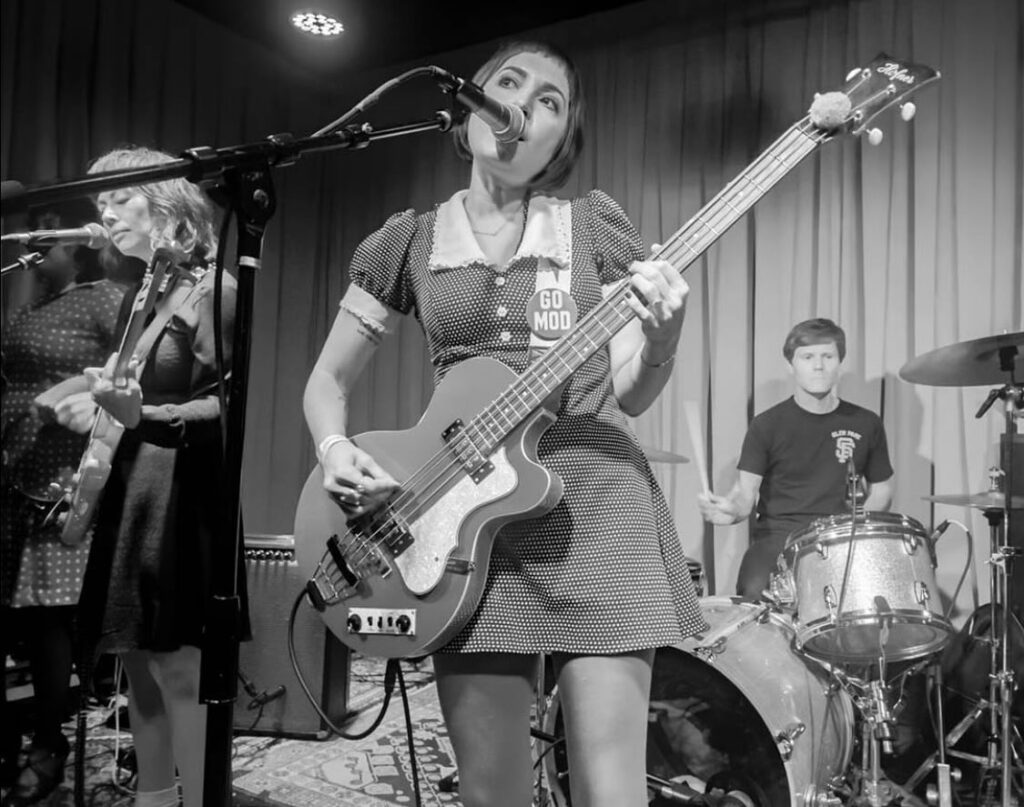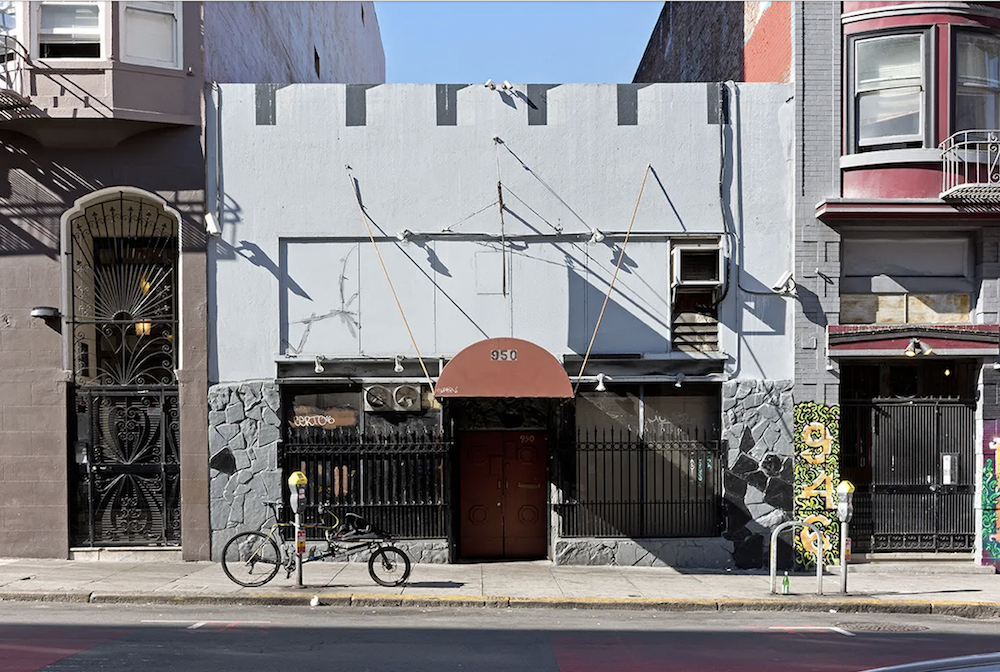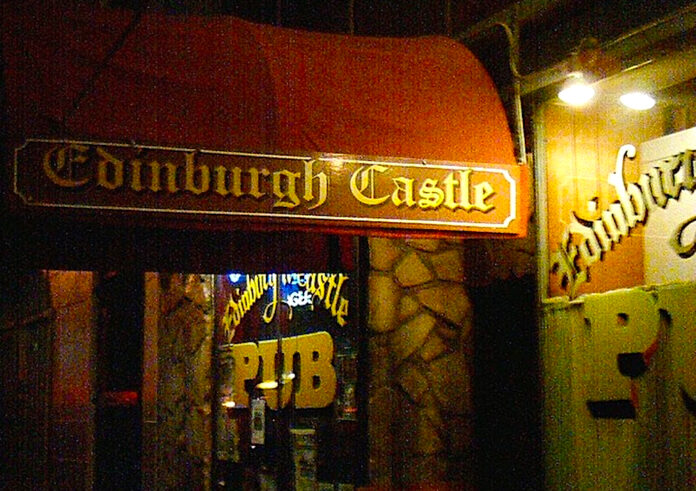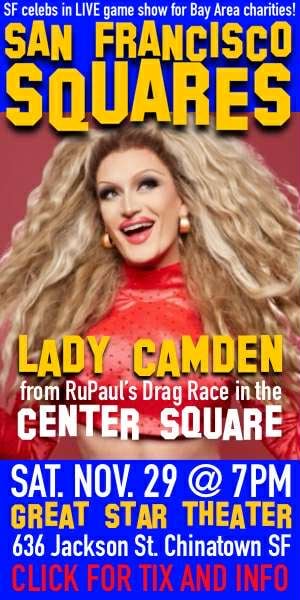Well, hello lovers of music and culture. We are Under the Stars, a quasi-weekly column that stays on message with strong-ass opinions, presenting new music releases, upcoming shows, and other adjacent items. We keep it moving, hustling with the changes, thinking outside the margins. We’ve been doing this for five years… Spend some time with us…
“LITTLE ROOMS”
“To young artists, I want to say, get your hands dirty and drop the screens and get out in your garage or your little room and get obsessed. Get obsessed with something, get passionate. We all want to share in what you might create,” Jack White said upon being inducted into The Rock and Roll Hall of Fame in Cleveland, Ohio, on Saturday, November 8.
“I myself have been in a lot of bands that you’ve probably never heard of. But for some reason, people especially connected with this one two-piece project that I was in called the White Stripes. We don’t know why these things happen, but when they do, it’s the most beautiful thing you can have as an artist or musician when people are responding and sharing with you.”
He accepted on behalf of the Detroit act’s drummer, Meg White, who has lived a private life since their spectacular 2000s ascent and 2011 breakup. At the apex of the duo’s grip on the world, selling out shows all over, it was Meg White who took it in the teeth, from social media, critics, and anybody with a hot take and no credible musical skills. It was disgusting, vile in nature, how mean, toxic, and, btw, wrong, most critics were of her acumen behind the drums.
The duo’s epic Elephant, from 2003, is a bang-on assault you can’t deny. And I suggest tossing out “Seven Nation Army,” because by now it’s a jock jam. I’m talking about all those other ditties that run roughshod with Marshawn Lynch ‘through yo’ face’ intensity. “Ball and a Bisquit” sugar, the blues in long player presentation, or throw “Hypnotize” “Black Math” or “Girl, You Have No Faith in Medicine” on blast, and you quickly understand, to steal from another album’s title, Jack is the Icky, and damn well Meg is the Thump! Case closed. Hello!
It’s been rumored that Jack White silently donated $20,000 to The Roxie Theater in The Mission during COVID to keep it going. If you follow him, you know he’s a patron of the arts, supporter of many rooms, if you will.
But Jack’s comment about those little rooms resonated with André 3000 of Outkast, especially, as he and Big Boi were also inducted into the Hall on the same night. The mention of that little room brought Thee Stacks to tears, as he understood all too well what it meant to start so small and humble with just an idea. And pour sweat, blood, money you don’t have, hope, other family members’ hope too, faith, belief, naivety, and anything else that might work. Talent helps, but that’s not always the determining factor.
Help us save local journalism!
Every tax-deductible donation helps us grow to cover the issues that mean the most to our community. Become a 48 Hills Hero and support the only daily progressive news source in the Bay Area.
I’m grateful I can still visit various “little rooms” throughout the Bay and witness the beginnings of something so innocent that someone believes in it wholeheartedly—along with Muni fare. As a DJ, I played in MANY little rooms, with numerous DJ friends, just for the sake of kicks, little money, God awful shots of whatever was being poured, and to revel in the moment of being and feeling alive.
Mastering the opportunity to try and read a crowd and sweep them off their feet with the records in my bag. Testing out ideas, theories in real time. No other feeling like it in the world.

So to witness those beginnings and then, a couple of years later, see the same artists performing in larger venues, with more people, or in some cases, watching a smaller act open for international stars right here in The Bay—that’s something special. I had the pleasure of seeing Seablite open for Laetitia Sadler, the vocalist for Stereolab, during her headlining performance at Noise Pop at The Chapel a couple of years ago.
On that night, the venue was packed with fans and friends, creating an electric atmosphere. It’s hard to believe that back in 2020, I saw the same band at the same venue for the first time, performing for a much smaller crowd. Yet, they brought just as much joy and enthusiasm to the stage. Watching their journey and growth over the years has been truly incredible. They will be playing their final show at Make-Out Room on December 5.
As word came down a couple of months ago from Broke-Assed Stuart that The Edinburgh Castle had closed—it never recovered from the pandemic—a rush of foggy memories came to mind. On a quick search, you will get all the hits: The Scottish-themed dive first opened at 950 Geary Street in 1959 and became a hangout for writers, artists, and locals. Irvine Welsh even staged the US debut of Trainspotting there before it hit the big screen. The bar also made cameos in So I Married an Axe Murderer and Venom.
Ok. Thanks, AI. Here’s what’s human.
At one time, tons of sweaty, broke, visionary hipsters and their indie-pop souls danced below the grubby coat of arms insignia that hung from the ceiling. Well past closing time. The term was called a lock-in, kiddos. The same thing was going on around the corner at Club 222 with electronic, house, disco DJs, and their late-night following.
Not only will The Castle be much missed, but also what lies in the future of Bottom of the Hill, Thee Parkside? We should be hopeful about the reopening of legendary SF punk club Mabuhay Gardens (in its way), but live music spaces keep disappearing.

“The Castle” was located in the middle of the very colorful thoroughfare section of Geary before you hit Van Ness, where it cleans up for business. It was a true city hang. Emphasized by that exterior that sometimes looked sleazy, warding off the faint of heart in pure dive bar style, it reminded patrons exactly where they were. The Castle served as a local indie band incubator—the way The Balboa and, for sure, The Four Star Theater are doing in 2025. Meaning certain smaller bands, previous and post-2000, couldn’t get booked at larger venues, so they built up their following by taking up an unofficial residency, by way of upstart bookers and promoters (non-corporate baby) in the loft at The Edinburgh Castle.
Who hung out there? People who flocked to affordable drinks, basically, creators and the crowd that followed them. Writers, musicians, professional drinkers, drunks, tech workers, hustlers, your fave or most reliable dealer (oh dude, it was sketch), cigarette smokers (they had an indoor smoking section up front), plumbers, people in bands, folks dreaming about forming a band, poets, screenwriters, playwrights, DJs, people who dreamed about being a DJ, happy hour regulars, darts players, pool players, single malt whiskey connoisseurs, and yesUK expats.
Who, along with others, ordered fish and chips from Old Chelsea, a small shop around the corner that delivered piping hot, newspaper-wrapped bundles to the pub. Trust me, they were spot on. An awesome English tradition in Northern California, until the SF board of health shut it down.
Jessica Beard, who had a fun pop DJ night at The Edinburgh Castle from 2001 to 2003, contributed to making that venue a spot you just had to attend during the aughts.
“In the early 2000s, some of us pop-obsessed young folks started a night called Club Lovely at the Castle upstairs. It was twice a month on Wednesdays and free. We’d pack the place, sometimes both up and downstairs, and never got paid—only free drinks. We played indie pop records pretty exclusively and generally matched the mood of the great pop scene that was burgeoning here around bands like the Aislers Set, the Fairways, Papercuts, etc.
“The night lasted around two years before I moved away for grad school for a few years. For our last night, we had two bands play, Track Star and a band that was newer called Mates of State. (We had no idea they would get huge. They were just people we knew from friends of friends). The upstairs was packed, and Track Star closed off the night. It was definitely late when they played their last song, and somebody drunkenly yelled out for them to play it again. They not only played the last song again, but continued to play most of the entire set until the early morning hours,” she said.
“In 2001 and 2002, we had some great pop fests. We’d have the pre-party at our night, and you literally could not move downstairs, and the upstairs little room was sweaty and packed with dancing people. One year, I left the upstairs room to get a beer, and I saw a former label boss who will go unnamed trying to walk across the beams that traverse the two seating areas on the upstairs part of the bar. The crowd downstairs had no idea, and this guy was pretty hammered. His friends coaxed him back to safety. I swear it took at least 10 minutes while some of us looked on in total fear of the worst. I couldn’t ever go there again without seeing that flash before my eyes.”

That rush of lo-fi SF memories, at least by today’s standards, immediately triggers thoughts on how vital performance spaces, live music spaces, even if they look worn or rough around the edges, are in terms of the roles they serve in a city. This city. I’d attended company Holiday parties there, gone to see numerous bands there (shout out to Magic Bullets), seen many DJ nights there… according to the rumor mill, supposedly, back in the day, even Belle and Sebastien would party there.
My old boss, the former owner of The Uptown, G. Scott Ellsworth (yes, I bartended there a long time ago), who passed away in 2014, would always catch grief from locals about why he didn’t modernize and dress up the bar. Understand that it wasn’t a music space—except for the stellar jukebox—but it held a certain designation for a certain type of city dweller. It too was a little room.
Decent-priced drinks always bring the creatives. At times, it did look a bit ragged and weary. He would always remind me that people flock to familiarity. Once you mess with that idea in their heads, they are less committed to coming back and seeing the venue as their second home.
That knowledge always stuck with me.
(Thanks to Jessica Beard and Andy Pastalaniec for their assistance for the piece.)
But back to those Hall inductees…. Sometimes you don’t see bands or artists of that fame, who have made it big, maintain such humility. But that Jack White-OutKast moment—truly something else. A reminder, for those who came from those little rooms.
INDIGO ELEPHANT, “ALL MINE,” FROM THE ART OF EROSION
The Oakland band Indigo Elephant features a catchy and engaging arrangement in their song “All Mine.” The group consists of members Julius, Cliff, Brendan, and Levi, who showcase sugar-sweet vocal harmonies that enhance their laid-back song structures. Together, they create a polished version of songwriting that truly stands out. This track was recorded alongside the rest of their album, The Art of Erosion, at Tiny Telephone studios in Oakland. But a quick glance at the credits reveals a skilled audio engineer from the Bay Area in the production work.
Producer Maryam Qudus, who also performs and records solo as Spacemoth, has packed up quite a stellar list of projects over the past couple of years: News of the Universe by La Luz, whom she recently opened for as Spacemoth and played with in the band too at The Chapel earlier this month, and Revival of a Friend by local band Sour Widows, plus she had a hand in a release you may have heard of, The Tortured Poets Department by Taylor Swift. Everything Qudus touches reaps praise and success. So you can expect Indigo Elephant, yet another Bay Area project finessed by a master from behind the boards, to do well.
Grab The Art Of Erosion here and catch this band at Bottom Of The Hill on December 2.
KHRUANGBIN AT THE REGENCY BALLROOM, SAT/22 & SUN/23
There’s been some talk about whether hip-hop is dead. For the first time since 1990, Billboard’s Hot 100 listed zero rap songs in its Top 40 last month. But as anyone knows in this world, everything is not exactly as it seems. Does the genre that defined popular culture for three decades, that basically gaffled the anti-hero badge of swag (I made that shit up) from rock, punk, and all guitar-based music, just call it a day?
Not so fast, Sparky. Grab some settle-down juice.
There was a time in SF when if you were a DJ, you were playing dance-oriented stuff, hip-hop, rare and funky jazz, disco house, rock breaks, and similar genres. Then, almost overnight, in the mid to late ’90s, actually in Japan, circa 1999, it was declared that turntables were more popular than guitars. Y’all remember that?
DJ turntables were outselling guitars? Well, I remember, because rock and rock fans started taking my DJ gigs. There was a shift, a pivot. The backbeat, sampling ideas, and technological advances that came with hip-hop production values have moved into every genre. Hip-hop has become pop, to a certain degree.
I mean, where do you think trip-hop came from? I’m using just one producer, but there are so many: Look at El Michaels Affair, who produces with that vast library of sounds for Nora Jones all the way to Black Thought.
Khruangbin, the biggest indie-rock, hip-hop adjacent, global music ambassador on the planet—their base, their broth comes from the bones of hip-hop. How many times have you heard an emcee’s flow in your head, just spittin’ over a Khruangbin beat? There you go.
Don’t get me wrong, a lot goes into that recipe. But when Jay Z goes on record to say he’s a fan, and Theo Parrish straight up samples you? Folks can’t buy that kinda street cred, you got it or you don’t.
I’ll return to the original “where did hip-hop go” conversation at a later time, but understand. Khruangbin got the whole world rockin’ to one beat.
Grab tix to Khruangbin at The Regency Ballroom here.




